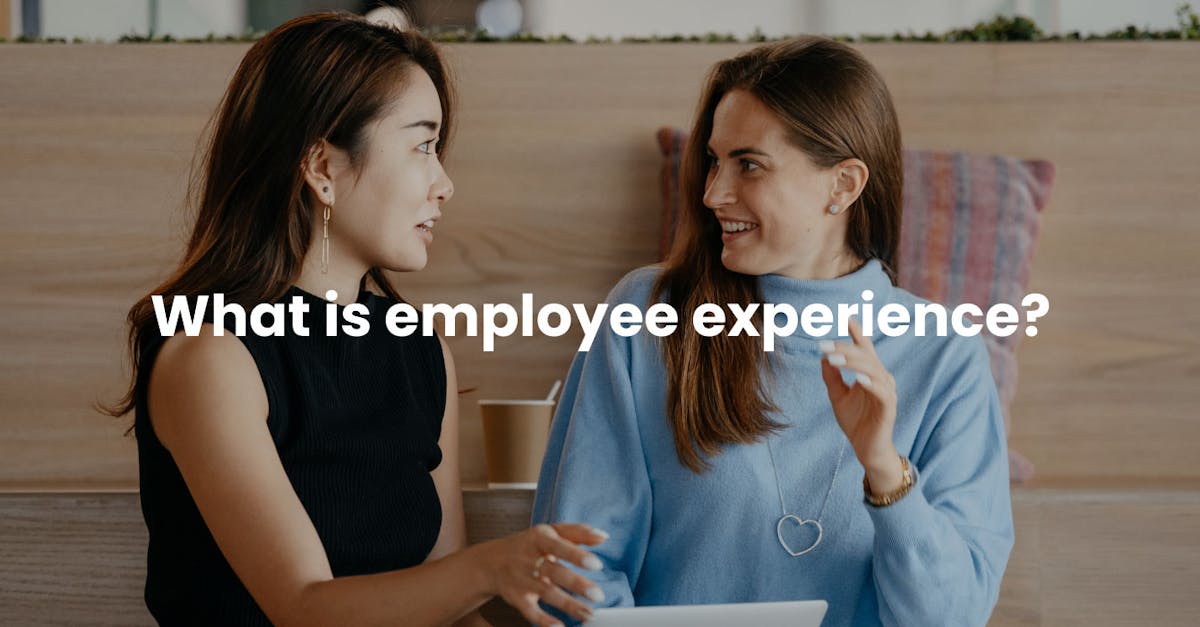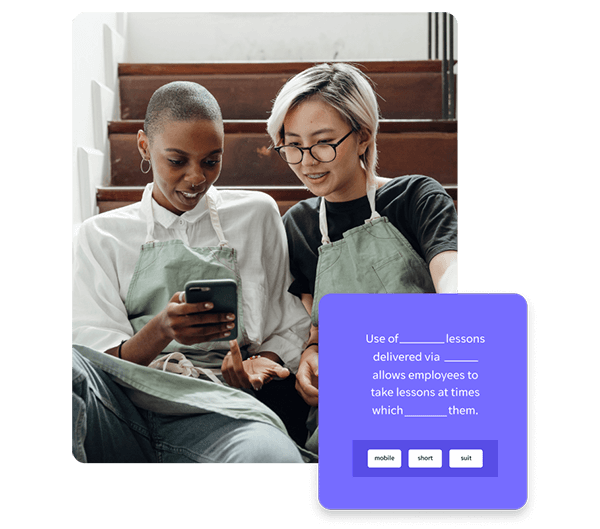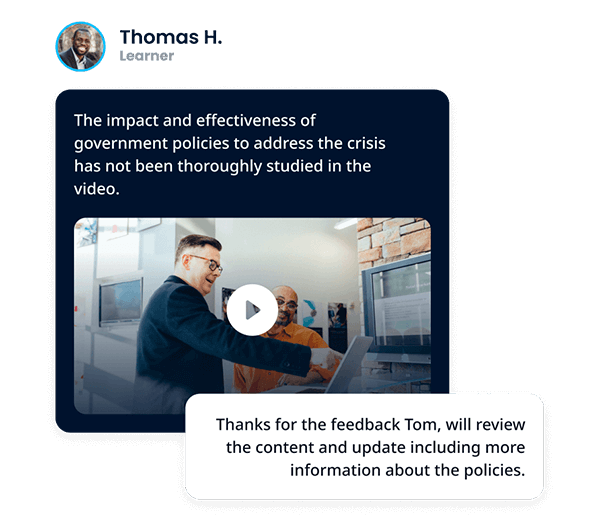What is employee experience?

In order to best understand ‘what is employee experience’, take a moment to see your enterprise as a tourist destination. Your job is to attract travelers to visit for as long as possible. What are the unique points about your place that will create a positive customer experience?
Incorporating a service mindset
One of the things that often ‘makes or breaks’ a customer experience is service. A hotel can be breathtakingly beautiful, but if the cleaning staff is not up to par, you probably won’t go back. A restaurant can offer mouthwatering dishes, but if your server is never around when you need them and is unhelpful when they are, you will most likely eat somewhere else next time. That's why, a restaurant should include restaurant training courses in management.
Your employees are your ‘customers’
Like it or not, your employees are customers in a way. They are always ‘shopping’ for a better job, a more fulfilling position. What is their employee experience at your workplace? Is it going to keep them with you longer or drive them to make a move more quickly? One of the most important things you can offer them is superb service.

A personal experience with bad service
I was working as a computer programmer in an insurance company. We had an important project which was due in July. I met each milestone on time or early. The department we were writing the program for was always late giving us feedback, so the project kept getting delayed.
I was scheduled to take a vacation in August. The airplane tickets had been paid for; the hotel also. On August 1, the project was still incomplete. Everyone knew why, but there was nothing I could do. The next week, I took my vacation.
In October, I had my 6-month review. My boss told me that my work was excellent, but that I would not be getting a raise due to that late project. She said (more or less—it was about 40 years ago): “We know it was not your fault, but that’s office politics. The department manager did not take responsibility, and we needed to put the blame somewhere.”
I found another job and left a week later. When they reminded me that I needed to give two weeks’ notice, I told them to be glad that I was not filing a formal complaint with HR and perhaps even taking it further.
Employee expectations
In general, workers are looking for workplaces that really see and hear them. This is especially true during significant moments or times in their lives.
One huge example is employees with young children. They want to know: How flexible and understanding are you when they have to leave early to pick up their child, take time off because their child is sick, or come in late due to a child-related issue? For parents with very young children, does your company offer nearby (or better still ‘on location’) childcare?
Another service category is life milestones, both happy and sad. Weddings, deaths, divorces, guests visiting from abroad, significant birthdays…the list is endless. Basically, how well does your workplace support them during an important event or time in their life?
And then, of course, there is the workplace experience itself. Employees consider: How was their onboarding—were they made to feel welcome; was it sufficient; or were they basically shown to their desk and left to figure it out on their own? Do they feel they have opportunities to develop and grow in their current job and overall as a person?
All these and more make up the employee experience. No matter how wonderful your company is in theory or even in practice, if your workers are not ‘feeling the love’, it doesn’t count.
Employees don’t need companies like they used to
You may feel that this subjective employee experience viewpoint is very demanding. Like it or not, however, here’s the reality: today’s post-COVID work landscape has been shaped by significant changes. These changes have caused a shift in worker perspectives and priorities.
Working from home
Employees have realized that many jobs can be done remotely. At the basic level, this means they do not have to be tied to ‘the office’. At a more complex level, this means that the office can be ANYWHERE. Employees have realized that many jobs can be done remotely. At the basic level, this means they do not have to be tied to ‘the office’. At a more complex level, this means that the office can be ANYWHERE. Your workspace can be a cozy cabin in the woods, a beachfront bungalow, or even a vintage used RV rolling down the open road.

The result is that the employment marketplace is now global rather than local. People are no longer restricted by jobs that they can travel to within a reasonable time frame. As long as they can connect online, they can show up for work.
A buyer’s market
Employees are not willing to give up the benefits of the remote or hybrid workplace. The success of remote working speaks for itself, so there are not many options available to push employees back into the office.
Yes, management could hire new employees. Yet, this is not in management’s favor. Putting aside the costs of onboarding new workers, it really is a buyer’s market at the moment.
A recent online post by the World Economic Forum (WEF) reported that even though they are seeing a worldwide economic slowdown, there are still plenty of jobs to go around. In the UK and France, for example, there are only 2 active applicants for each job posting. This is even less in the US and Germany where there is a 1:1 ratio.
An online post by Forbes shared that in some areas, there are serious talent shortages. For example, tech, healthcare, hospitality, and retail are all suffering from ‘talent crunches’.
So workers are feeling that they have options. They do not have to settle for a workplace that does not meet their demands.
New online opportunities
During COVID, the online shopping world exploded. In many cases, we had no choice if we wanted to receive goods (like food) and important services (like online healthcare advice). Now, even though we have a choice, many of us (myself included) continue to do a lot of our shopping online.

This has created a plethora of amazing work options. One example is artists and designers. People who could not afford to make a living from things they create due to the expenses of renting a gallery or shop can sell their items from home via the Internet.
Even if they don’t make a full salary, they can supplement their income with a part-time job in anything because their satisfaction is coming from selling their creations. Thus, there are even fewer workers for the ‘traditional’ workplace and even more workers who are not willing to ‘settle’.
Ways to improve the employee experience
One of the top employee experience ‘asks’ is professional development. People want their companies to invest in them by offering workplace education.
On the flip side, your company probably has a need to reskill and/or upskill your workforce. In its 2020 Future of Jobs Report, the WEF projected that by 2025, 50% of global employees would not have the required workplace skills unless there was large-scale upskilling and reskilling now.
So, education is a win-win. As I discussed in a recent article, more than one and a half decades of research continue to show how development and training can increase employee retention.
Use an LMS as your built-in training solution
Remember we spoke about a service mindset? A mobile-friendly, learning management system (LMS) can go a long way to giving your workers the attention they are looking for, providing a positive, sustainable answer to the ‘what is employee experience’ question.
Develop a proper onboarding process
Mentoring a new employee takes time. Yet, we spoke about how an employee’s experience begins from Day 1. Your LMS can help.
Component #1: microlessons—They are available 24/7 on your new hires’ mobiles or other digital devices. No WIFI? No problem. Content in a quality LMS such as EdApp is available online or off.

Microlessons present learning in bite-sized chunks of around 5 minutes or less. The template tool in an LMS such as EdApp means that turning your existing onboarding material into microlessons takes just minutes. Don’t have any onboarding material? Check out the EdApp Editable Course Library for courses that can be branded for your company and tweaked for your onboarding process.
Component #2: the Discussions feature—This forum-style feature allows people to have both peer-to-peer and/or peer-to-admin conversations. So, your trainee can get in touch with their workmates and/or supervisor as needed. Issues can be resolved via chat or people can meet quickly F2F in the workplace or online.

Make career development a priority
Aside from needed training, your LMS can offer a wide variety of courses for people to grow in their current profession or begin learning another one.
Current profession: Obviously, it is to your company’s advantage to have your workers as skilled as possible. Learning keeps people up-to-date with the knowledge and skills they need to perform their best.

Another profession: Whether we like it or not, people get bored with their jobs. Offering them a chance to learn another profession does not always mean they will leave your workplace. Actually, it is often the opposite. If the new job they learned fits your enterprise and you offer them a position in it, they will often reward your investment in themselves by staying.
Make training fun and interactive
Serving our employees means seeing them as whole people. Start engaging with your employees when you host virtual and hybrid events using RingCentral Events. This way, you can hold a physical programs and activities, while remote workers can still interact and share the fun with onsite employees.

Allowing them to study things that interest them (how to attend and host meetings, mindfulness, supporting someone in crisis, hygiene, getting started with Microsoft Excel, greatest sporting comebacks, yoga, mealtime management, teach yourself Korean, mental medicine…just to name a few) makes your employees more ‘rounded’ individuals. You never know when and how the knowledge and skills they learn will enrich your workplace. And giving them this opportunity shows your workforce that you care about them as people, not just as workers.
Join EdApp for free and improve the employee experience at your enterprise today!
Author
Guest Author Lisa Aharon
Lisa Aharon is a guest author at EdApp, offering varied experience as a computer programmer/analyst, technical writer, secretary/bookkeeper, copy editor, creative writer, and English teacher.
